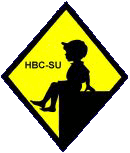
We have listed available information on individual English schools by century and then by decade. This helps to assess chronological trends in schoolwear. Here we will list schools by decade and year for which information is available. We have mostly archived our school information in the alphabetical section. We will eventually cross link those schools chronplogically here. We will begin this section with dated images that are not identified by school name. These chronolgical listings of course are more helpful in assessing fashion trends over time. The listings also provide valuable insights into educational trends.
We have very limited infornation on English schools in the 19th century, especially the early 19th century. A factor here is photography. There was no photography in the early 19th century. There are some paingings, but the lack of photography severely limits the number of images. Some schools like Eton had uniforms. Younger boys might wear tunics. We do not see school phtographs until the 1840s, but the number is limited. More become available in the 1850s. We see many boys wearing military style caps. Large numbers of images do not become available until the 1860s. This is when England began creating a state school system, but most images are from private schools. It was the pivate schools that had uniforms, ut at mid-century there was often considerable diversity. Only in the late 19th century do we see more standardized uniforms. Most boy wore long trousers until the late 19th century when we see knee pants and knickers. By this time England had a substntial system of state schools, but these schools had no require uniforms. Schoolwear thus reflected contemprary fashion trends.
While we have limited information about 19th schools, we have a great deal of information about schools in the 20th century. We have acquired information on quite a number of different types of schools, both preparatory and public schools, and the type of school had a significant impact on uniform and dress trends. Private schools generally had uniforms. State primary schiools did not, however, have uniforms until after World war II when many schools began afopting basic uniforms. The grammar schools tended to follow the educational model of the public schools and this included uniform trends. After World War II, England significantly expanded the state secondary school system, most of which adopted school unifirms following the vasic look of the public schools and grammar schools. The uniform styles developed by the English schools in the mid-20th century tend to be the samne styles that are worn in many different coyntries today.
Additional information on individual schools is available in the personal experiences section.
Related Chronolgy Pages in the Boys' Historical Web Site
[The 1880s]
[The 1890s]
[The 1900s]
[The 1910s]
[The 1920s]
[The 1930s]
[The 1940s]
[The 1950s]
[The 1960s]
[The 1970s]
[The 1980s]
